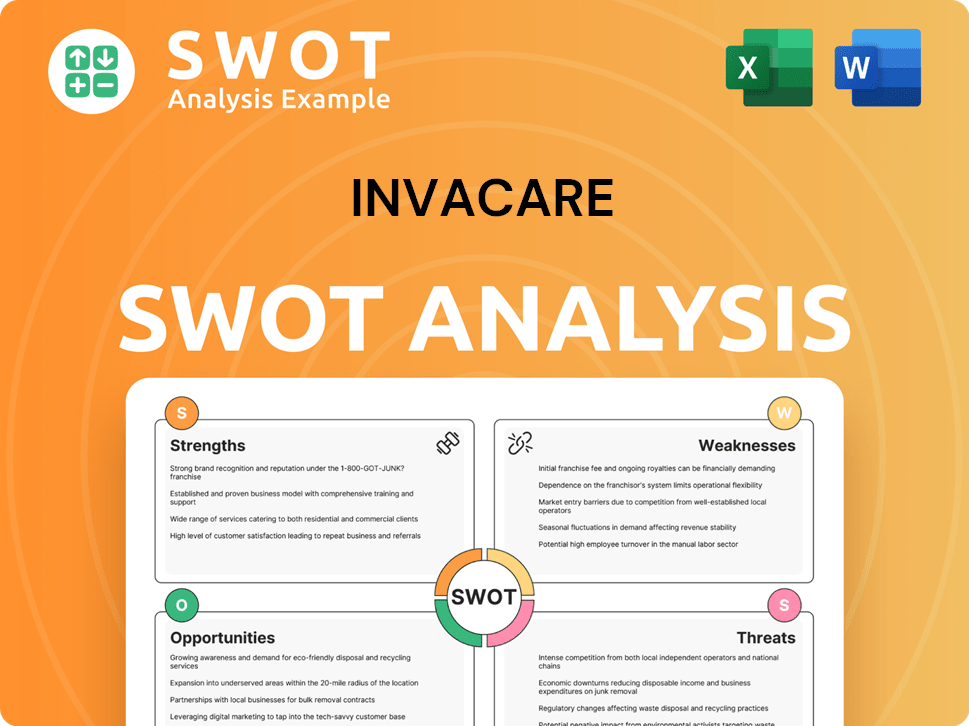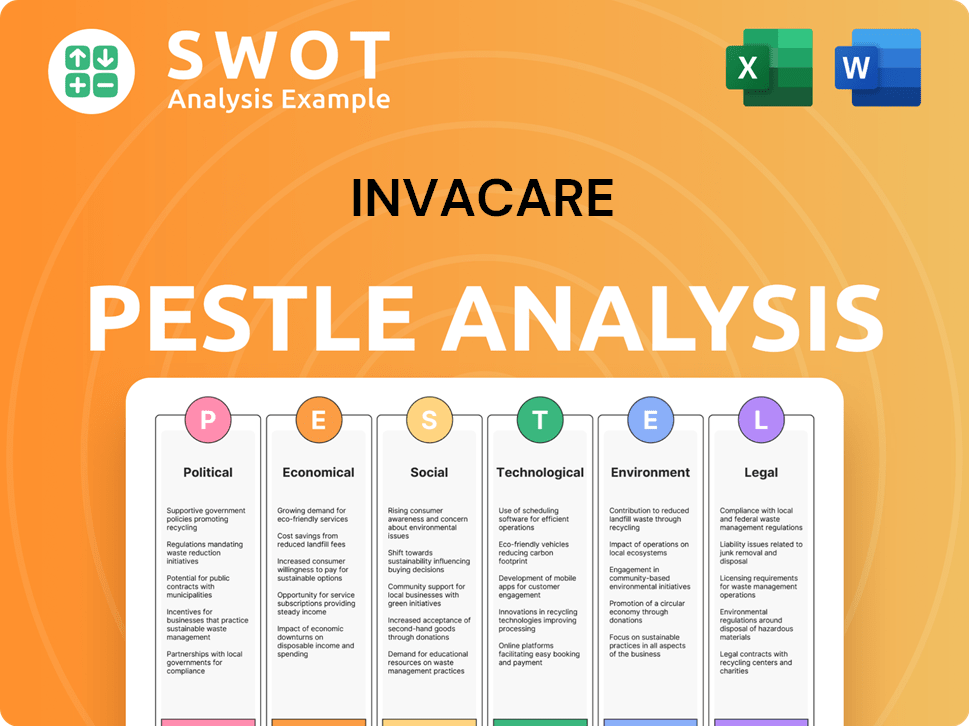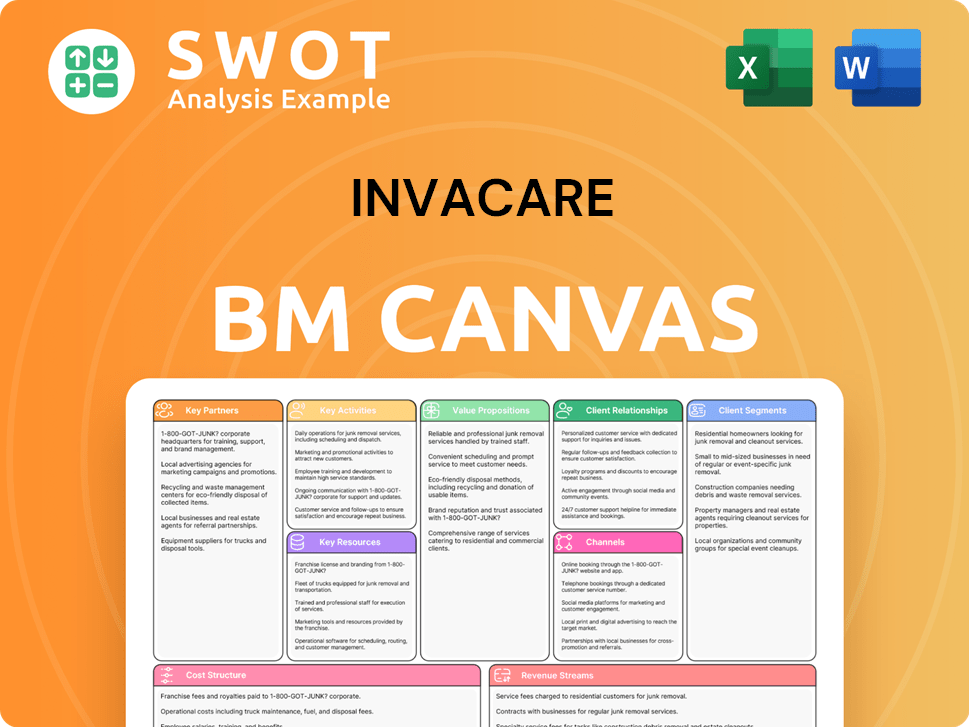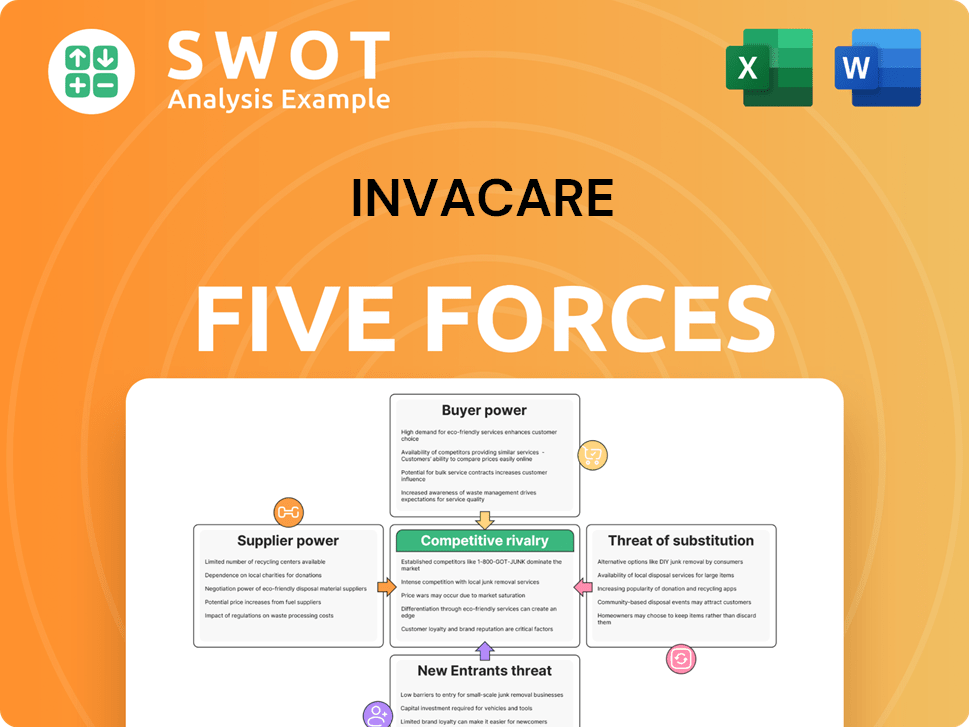Invacare Bundle
How Did Invacare, a Leading Medical Equipment Maker, Begin?
Journey back in time to explore the remarkable Invacare SWOT Analysis, a global leader in the medical equipment sector. From its humble beginnings in 1885, Invacare's story is one of innovation, adaptation, and resilience within the dynamic healthcare industry. Discover the pivotal moments that shaped this wheelchair manufacturer and its evolution into a key player in the mobility solutions market.

This exploration of Invacare's history unveils the strategic decisions that propelled its growth, from early Invacare products to its current extensive product range. Understanding the Invacare company timeline, including its acquisitions and financial performance, provides valuable insights into its enduring impact on mobility and the broader healthcare market. Learn about Invacare's challenges and successes, its global presence, and its ongoing commitment to innovation.
What is the Invacare Founding Story?
The story of the Invacare company begins in the late 19th century, evolving from early mobility solutions to a major player in the healthcare industry. The journey from its origins to its current status is a testament to adaptation and innovation.
This evolution showcases how the company has navigated market changes and technological advancements. The company's history is marked by strategic acquisitions and a focus on meeting the needs of individuals with mobility challenges.
The roots of the Invacare company trace back to 1885, with the establishment of the Fay Manufacturing Company in Elyria, Ohio, by Winslow Lamartine Fay. Initially, the company manufactured tricycles, but quickly adapted to create mobility devices for people with disabilities.
- Fay's company initially produced tricycles.
- The company transitioned to creating mobility devices for individuals with disabilities.
- The company underwent several name changes before becoming the Colson Company in 1917.
- In 1957, the wheelchair division was purchased and renamed Mobilaid Inc.
In 1933, during the Great Depression, the company entered receivership and was reorganized as the Colson Corporation. The Pritzker family acquired Colson in 1953. In 1957, three employees purchased Colson's wheelchair division, renaming it Mobilaid Inc. Mobilaid focused on wheelchairs throughout the 1970s. In 1971, Boston Capital Corporation acquired Mobilaid and the Invalex Walker and Wheelchair Company, forming Invacare as a subsidiary.
The pivotal moment for the modern Invacare occurred in late 1979. A. Malachi Mixon III, then Vice President of Marketing at Technicare, led a group to purchase Invacare for $7.8 million from Johnson & Johnson, which had acquired Technicare in 1978. When Mixon and his group took control on January 2, 1980, Invacare had approximately 350 employees and sales of about $19 million. The name 'Invacare' comes from 'Innovation In Healthcare'. This acquisition marked the true beginning of Invacare as a standalone entity.
Invacare SWOT Analysis
- Complete SWOT Breakdown
- Fully Customizable
- Editable in Excel & Word
- Professional Formatting
- Investor-Ready Format

What Drove the Early Growth of Invacare?
Following its acquisition in late 1979, the Invacare company experienced significant growth and expansion. This period saw the company evolve from a focus on wheelchairs and limited mobility aids to a broader range of medical equipment. Strategic decisions, including going public and entering new markets, fueled this expansion, establishing Invacare as a key player in the healthcare industry.
In 1982, Invacare introduced the first motorized wheelchair with computerized controls, a significant innovation. This move highlighted the company's commitment to new product development and set it apart in the market. This early focus on innovation helped shape the company's trajectory in the healthcare industry.
The company went public in 1984, which provided capital for further expansion. This allowed Invacare to enter the European market for home healthcare products. This strategic move marked a crucial step in its geographical expansion, increasing its global presence.
By 1990, Invacare had introduced 53 new products, including advancements in wheelchair design. The company expanded its product lines to include a comprehensive range of medical equipment. This broad offering solidified Invacare's position as a leader in the home healthcare industry.
The company's revenues significantly increased, reaching over $263 million by the fiscal year ending 1991. Sales dramatically increased to $620 million by 1996. By 2000, revenues surpassed $1 billion for the first time, with earnings reaching a record $59.9 million. For more details on the company's business model, check out Revenue Streams & Business Model of Invacare.
Invacare PESTLE Analysis
- Covers All 6 PESTLE Categories
- No Research Needed – Save Hours of Work
- Built by Experts, Trusted by Consultants
- Instant Download, Ready to Use
- 100% Editable, Fully Customizable

What are the key Milestones in Invacare history?
The Invacare company has achieved significant milestones throughout its history, shaping its position in the healthcare industry. The Invacare history reflects its evolution and adaptation to market changes.
| Year | Milestone |
|---|---|
| 1982 | Introduced the industry's first motorized wheelchair with computerized controls. |
| 1990 | Launched 53 new products, including advancements in power wheelchairs and a wheelchair designed for airliners. |
| 2023 | Emergence from Chapter 11 bankruptcy following financial restructuring. |
| 2024 | Launched the Rehab Innovator 360, a robotic-assisted therapy device. |
| 2024 | Sold its North American business to MIGA Holdings LLC. |
Invacare has consistently focused on innovation in the medical equipment sector. This commitment is evident in its development of advanced mobility solutions and therapy devices.
In 1982, Invacare introduced the first motorized wheelchair with computerized controls, marking a significant advancement in user control and functionality. This innovation set a new standard in the wheelchair manufacturer industry.
In 1990, Invacare introduced 53 new products, including advancements like microprocessors for power wheelchairs. This expansion broadened its product offerings and market reach.
The launch of the Rehab Innovator 360 in 2024, a robotic-assisted therapy device, provided real-time feedback on patient movement. The device achieved a 27% market penetration in its first quarter.
Invacare continuously expands its product lines, which include mobility scooters, walkers, pressure care and positioning products, as well as respiratory therapy equipment like PAP devices and oxygen concentrators. This diversification supports a wide range of user needs.
Despite its successes, Invacare has faced several challenges throughout its history. These challenges have tested the company's resilience and strategic adaptability.
In 1985, changes in Medicare reimbursement formulas by the U.S. government posed problems for the company. This created financial strain.
Invacare filed for Chapter 11 bankruptcy in February 2023 due to rising costs, tariffs, and supply chain issues. The company's financial restructuring included a $75 million equity rights offering.
In November 2024, Invacare sold its North American business to MIGA Holdings LLC to optimize operations. This strategic move allowed Invacare to focus on its European and Asia Pacific businesses.
The company relocated some manufacturing jobs from Elyria in January 2025 and shuttered an Ontario plant, resulting in job losses. These adjustments were part of its restructuring efforts.
The Invacare company continuously navigates the evolving landscape of the healthcare industry, adapting to shifts in market demands and technological advancements. You can learn more about their target market by reading Invacare's target market.
Invacare Business Model Canvas
- Complete 9-Block Business Model Canvas
- Effortlessly Communicate Your Business Strategy
- Investor-Ready BMC Format
- 100% Editable and Customizable
- Clear and Structured Layout

What is the Timeline of Key Events for Invacare?
The Invacare history is marked by significant milestones in the medical equipment industry. From its early days as a small manufacturing company to its current status as a global player, the Invacare company has navigated various challenges and opportunities, shaping its trajectory within the healthcare industry. The company's evolution reflects broader trends in healthcare, technological advancements, and market dynamics.
| Year | Key Event |
|---|---|
| 1971 | The company was founded by A. Malachi Mixon III. |
| 1979 | Became a publicly traded company. |
| 1984 | Acquired the Everest & Jennings company, a major competitor in the wheelchair manufacturer market. |
| 1990s | Expanded its global presence through acquisitions and international operations. |
| 2000s | Faced challenges including product recalls and financial difficulties, leading to restructuring efforts. |
| 2023 | Announced strategic initiatives, including a focus on core product lines and market expansion. |
The aging global population and increasing prevalence of chronic diseases create substantial demand for mobility and home healthcare products. The company is positioned to capitalize on these trends by expanding its product offerings and distribution networks. Innovation in areas like powered wheelchairs and home medical equipment is key to maintaining a competitive edge. The growth strategy of Invacare is an important aspect to consider.
Recent financial results indicate ongoing restructuring efforts aimed at improving profitability and reducing debt. The company is focusing on streamlining operations, optimizing its product portfolio, and reducing costs. The company's ability to execute its strategic plan and improve its financial performance will be crucial for its future success. The company has been working to improve its financial standing.
The company continues to invest in research and development to create innovative products that meet the evolving needs of its customers. This includes advancements in wheelchair technology, home medical equipment, and related healthcare solutions. The company's focus on innovation is essential for maintaining its market position and driving future growth. The company's focus is on innovation.
The healthcare industry is highly competitive, with numerous players vying for market share. The company competes with both established companies and emerging startups. The company's success depends on its ability to differentiate itself through product quality, customer service, and strategic partnerships. For more information, check out the Growth Strategy of Invacare.
Invacare Porter's Five Forces Analysis
- Covers All 5 Competitive Forces in Detail
- Structured for Consultants, Students, and Founders
- 100% Editable in Microsoft Word & Excel
- Instant Digital Download – Use Immediately
- Compatible with Mac & PC – Fully Unlocked

Related Blogs
- What is Competitive Landscape of Invacare Company?
- What is Growth Strategy and Future Prospects of Invacare Company?
- How Does Invacare Company Work?
- What is Sales and Marketing Strategy of Invacare Company?
- What is Brief History of Invacare Company?
- Who Owns Invacare Company?
- What is Customer Demographics and Target Market of Invacare Company?
Disclaimer
All information, articles, and product details provided on this website are for general informational and educational purposes only. We do not claim any ownership over, nor do we intend to infringe upon, any trademarks, copyrights, logos, brand names, or other intellectual property mentioned or depicted on this site. Such intellectual property remains the property of its respective owners, and any references here are made solely for identification or informational purposes, without implying any affiliation, endorsement, or partnership.
We make no representations or warranties, express or implied, regarding the accuracy, completeness, or suitability of any content or products presented. Nothing on this website should be construed as legal, tax, investment, financial, medical, or other professional advice. In addition, no part of this site—including articles or product references—constitutes a solicitation, recommendation, endorsement, advertisement, or offer to buy or sell any securities, franchises, or other financial instruments, particularly in jurisdictions where such activity would be unlawful.
All content is of a general nature and may not address the specific circumstances of any individual or entity. It is not a substitute for professional advice or services. Any actions you take based on the information provided here are strictly at your own risk. You accept full responsibility for any decisions or outcomes arising from your use of this website and agree to release us from any liability in connection with your use of, or reliance upon, the content or products found herein.